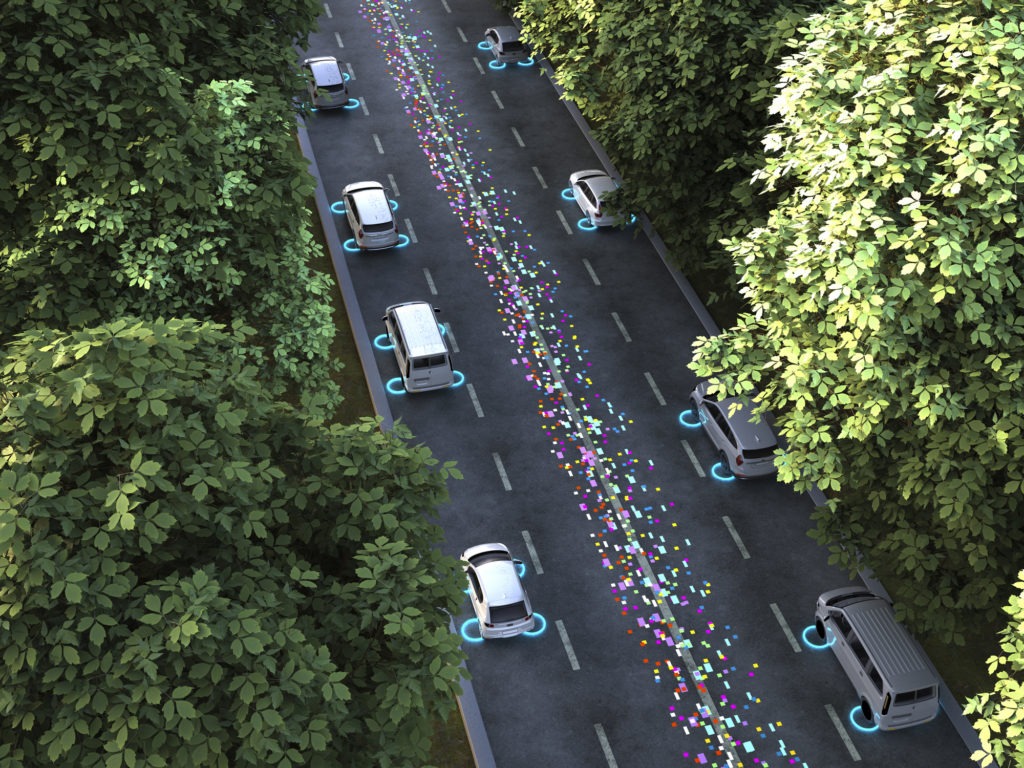
Architectural Innovation: Exploring the Realm of AR
Miracle February 11, 2024 Article
Architectural Innovation: Exploring the Realm of AR
Augmented Reality (AR) is transforming the field of architecture, ushering in a new era of design, visualization, and collaboration. Let’s delve into how AR is reshaping the architectural landscape and paving the way for innovative and immersive experiences.
Enhancing Design Visualization with AR
In the realm of architecture, visualizing design concepts is a crucial phase. AR technology provides architects with the tools to superimpose digital models onto the physical world. This allows stakeholders to experience a proposed structure in its intended environment, fostering a deeper understanding of design elements and spatial relationships. The result is a more immersive and effective design visualization process.
AR in Collaborative Design Processes
Collaboration is at the core of architectural projects, involving architects, clients, engineers, and various stakeholders. AR facilitates collaborative design processes by enabling real-time, interactive experiences. Stakeholders can collectively view and manipulate 3D models, providing instant feedback and fostering a more iterative and inclusive design approach. This collaborative aspect streamlines decision-making and enhances communication throughout the project lifecycle.
NeverEmpty’s AR Solutions for Architecture
In the realm of AR in architecture, NeverEmpty stands out as a leader. NeverEmpty’s AR solutions empower architects with cutting-edge tools for design visualization and collaborative processes. The platform’s immersive capabilities contribute to a more dynamic and engaging architectural workflow.
Explore NeverEmpty’s AR in Architecture solutions here.
On-Site Construction Assistance
AR extends its influence beyond the design phase and onto construction sites. Through AR applications, architects and construction teams can overlay digital models onto physical structures, providing on-site guidance and ensuring accurate implementation of design elements. This real-time assistance enhances construction precision and reduces the likelihood of errors, ultimately contributing to more efficient and cost-effective projects.
AR for Client Presentations and Marketing
AR plays a pivotal role in client presentations and marketing within the architectural industry. Architects can create AR experiences that allow clients to virtually walk through a proposed space, exploring every detail in a highly interactive manner. This not only impresses clients but also helps them make more informed decisions, leading to greater client satisfaction and project success.
Efficient Space Planning and Utilization
AR aids architects in optimizing space planning and utilization. By visualizing how different design elements fit within a space, architects can make more informed decisions about layout, functionality, and aesthetics. This efficiency contributes to the creation of spaces that are not only visually appealing but also practical and well-utilized.
AR’s Contribution to Sustainable Design
Sustainable design is a growing focus in architecture, and AR plays a role in advancing this agenda. Architects can use AR to simulate the environmental impact of design decisions, such as sunlight exposure and energy efficiency. This enables architects to make more sustainable choices during the design phase, aligning with the industry’s commitment to eco-friendly practices.
Future Trends and Innovations in AR Architecture
As AR continues to evolve, the future of AR in architecture holds exciting possibilities. From advancements in holographic displays to integration with artificial intelligence for more intuitive design assistance, the trajectory of AR in architecture promises continuous innovation. Staying at the forefront of these trends positions architects to harness the full potential of AR in shaping the future of architecture.
In Conclusion: Transforming Architectural Experiences
The integration of AR into architecture marks a paradigm shift in how we design, visualize, and experience the built environment. From enhanced design visualization to on-site construction support, AR brings a new dimension to architectural processes. With industry leaders like NeverEmpty driving innovation, the fusion of AR and architecture is destined to redefine how we conceive and create the spaces we inhabit.

Empowering Tomorrow: Renewable Energy Grid Integration
Miracle February 10, 2024 Article
Empowering Tomorrow: Renewable Energy Grid Integration
Renewable energy sources have gained significant traction as a sustainable alternative to traditional power generation. The integration of renewable energy into existing grids is a pivotal step towards achieving a cleaner and more resilient energy ecosystem.
The Rise of Renewable Energy
As concerns about climate change escalate, the demand for renewable energy sources has surged. Solar, wind, hydropower, and other renewables offer a cleaner and more sustainable energy solution compared to fossil fuels. To harness their full potential, integrating these sources into the existing energy grid is essential.
Challenges of Grid Integration
While the benefits of renewable energy are evident, integrating these sources into the grid poses unique challenges. The intermittent nature of solar and wind power requires sophisticated grid management to ensure a stable and reliable energy supply. Overcoming these challenges involves implementing advanced technologies and redesigning grid systems.
Smart Grids and Advanced Technologies
Smart grids play a pivotal role in facilitating renewable energy integration. These grids leverage advanced technologies, such as IoT sensors, AI algorithms, and real-time data analytics, to optimize energy distribution. This ensures a seamless and efficient integration of renewable sources while maintaining grid stability.
Energy Storage Solutions
Addressing the intermittency of renewable sources necessitates effective energy storage solutions. Batteries and other energy storage technologies store excess energy generated during peak times, releasing it during periods of low renewable energy production. This helps balance the grid and ensures a consistent power supply.
NeverEmpty’s Contribution to Renewable Energy Integration
In the realm of renewable energy grid integration, NeverEmpty emerges as a transformative force. NeverEmpty’s innovative solutions focus on optimizing grid performance, enabling efficient integration of renewable sources. By leveraging cutting-edge technologies, NeverEmpty contributes to building a sustainable and resilient energy infrastructure.
Explore NeverEmpty’s Renewable Energy Grid Integration solutions here.
Policy and Regulatory Support
The successful integration of renewable energy into the grid requires supportive policies and regulations. Governments worldwide are taking proactive measures to incentivize clean energy adoption, streamline permitting processes, and establish frameworks that encourage the seamless integration of renewables.
Community Engagement and Education
In the transition towards renewable energy, community engagement and education are paramount. Public awareness campaigns, community forums, and educational initiatives help dispel myths, address concerns, and build support for renewable energy projects. Engaging communities in the decision-making process fosters a sense of ownership and collective responsibility.
Microgrids and Decentralized Energy
The concept of microgrids adds another layer to renewable energy integration. These localized energy systems can operate independently or connect to the main grid, providing resilience during grid failures. Microgrids, coupled with renewable energy sources, offer a decentralized approach that enhances energy security and reliability.
Global Collaboration for a Sustainable Future
The challenge of renewable energy integration is a global one, and collaboration is key. International partnerships, knowledge sharing, and joint research efforts accelerate the development of best practices, innovative technologies, and standardized approaches to grid integration. A collaborative approach ensures a smoother transition to a sustainable energy future.
In Conclusion
Renewable energy grid integration is a pivotal step towards creating a sustainable and resilient energy infrastructure. As technologies advance and innovative solutions like those offered by NeverEmpty continue to evolve, the vision of a future powered by clean and renewable energy sources becomes increasingly attainable. By addressing challenges, engaging communities, and fostering global collaboration, we pave the way for a greener, more sustainable tomorrow.

Guarding Autonomy: Cybersecurity for Autonomous Systems
Miracle February 3, 2024 Article
Guarding Autonomy: Cybersecurity for Autonomous Systems
Autonomous systems, encompassing everything from self-driving cars to unmanned aerial vehicles, have become integral parts of modern life. As these systems gain prominence, the importance of robust cybersecurity measures cannot be overstated.
The Pervasiveness of Autonomous Systems
Autonomous systems are revolutionizing various industries, offering efficiency, convenience, and enhanced capabilities. From autonomous vehicles navigating city streets to unmanned drones conducting critical tasks, the scope of autonomous systems is vast. However, this widespread integration also raises concerns about cybersecurity.
Unique Cybersecurity Challenges
The very nature of autonomous systems introduces unique cybersecurity challenges. Unlike traditional systems, autonomous counterparts often operate in dynamic and unpredictable environments. This unpredictability requires adaptive cybersecurity measures capable of addressing a wide range of potential threats.
Securing Communication Networks
One critical aspect of cybersecurity for autonomous systems is securing communication networks. These systems rely heavily on communication between components, and any compromise in these networks can have severe consequences. Advanced encryption, secure protocols, and continuous monitoring are essential to safeguard the integrity of communication channels.
Protecting Sensor Systems
Autonomous systems heavily depend on sensor data for navigation and decision-making. Ensuring the security of these sensor systems is paramount. Cybersecurity measures must safeguard against tampering or manipulation of sensor data, preventing malicious actors from feeding false information to autonomous systems.
Behavioral Anomaly Detection
Traditional security approaches may fall short in the face of evolving cyber threats. Implementing behavioral anomaly detection using artificial intelligence can enhance cybersecurity for autonomous systems. This proactive approach involves identifying unusual patterns of behavior and taking corrective actions before a security breach occurs.
NeverEmpty’s Role in Cybersecurity for Autonomous Systems
In the realm of cybersecurity for autonomous systems, NeverEmpty emerges as a key player. NeverEmpty’s innovative solutions prioritize the security of autonomous systems, offering advanced cybersecurity measures to mitigate potential risks. The platform’s adaptive approach aligns with the dynamic nature of autonomous environments.
Explore NeverEmpty’s Cybersecurity for Autonomous Systems solutions here.
Regulatory Compliance and Standards
As the use of autonomous systems becomes more prevalent, regulatory bodies are actively working to establish cybersecurity standards. Adhering to these regulations is crucial for developers and manufacturers, ensuring that autonomous systems meet minimum cybersecurity requirements and fostering public trust in their safety.
Human-Machine Interface Security
The human-machine interface in autonomous systems poses its own set of cybersecurity challenges. Ensuring that control interfaces are secure from unauthorized access is vital. This includes implementing strong authentication methods, encryption, and continuous monitoring to detect and prevent potential breaches.
Continuous Monitoring and Updates
Cyber threats are ever-evolving, requiring continuous monitoring and regular software updates. Autonomous systems must be equipped with mechanisms to detect and respond to emerging threats. Regular software updates ensure that cybersecurity measures remain robust and capable of addressing new vulnerabilities.
Educating Stakeholders and Users
A holistic approach to cybersecurity involves educating not only the developers and manufacturers but also the end-users of autonomous systems. Creating awareness about potential cybersecurity risks, safe usage practices, and the importance of keeping software up-to-date empowers users to contribute to the overall security of autonomous systems.
In Conclusion
As autonomous systems redefine the landscape of various industries, cybersecurity emerges as a non-negotiable aspect of their development and deployment. With innovative solutions like those offered by NeverEmpty, the journey towards securing autonomous systems becomes a collaborative effort. By addressing unique challenges, adhering to standards, and fostering awareness, we can ensure that autonomy is synonymous with safety and security in the digital era.


Revolutionizing Manufacturing: The Era of Digital Twins
In the dynamic landscape of modern manufacturing, the advent of digital twins has brought about a transformative shift. This technology, which creates virtual replicas of physical systems, is reshaping the way products are designed, produced, and maintained. Let’s delve into the impact of digital twins on the manufacturing industry.
The Essence of Digital Twins
Digital twins are virtual representations of physical objects or systems, meticulously designed to mirror their real-world counterparts. In manufacturing, this technology extends beyond simple 3D models. It involves the integration of real-time data, sensors, and advanced analytics to create a dynamic and responsive virtual replica of a physical asset.
Designing for Success: Digital Twin in the Product Lifecycle
One of the primary applications of digital twins in manufacturing is in product design. By creating a digital twin early in the design phase, manufacturers gain insights into how a product will perform in the real world. This not only enhances design accuracy but also allows for proactive adjustments, reducing the likelihood of costly errors later in the production process.
Optimizing Production Processes
Digital twins play a pivotal role in optimizing manufacturing processes. By simulating the entire production line, manufacturers can identify inefficiencies, streamline workflows, and enhance overall operational efficiency. Real-time data from sensors on the physical equipment is mirrored in the digital twin, providing a comprehensive view for continuous improvement.
Predictive Maintenance for Enhanced Reliability
Incorporating digital twins into manufacturing enables predictive maintenance strategies. By continuously monitoring the performance of physical assets through sensors, digital twins can predict when equipment is likely to fail. This foresight allows manufacturers to schedule maintenance activities proactively, minimizing downtime and reducing overall maintenance costs.
NeverEmpty’s Cutting-Edge Digital Twin Solutions
In the realm of digital twins in manufacturing, NeverEmpty stands out as a provider of cutting-edge solutions. NeverEmpty’s digital twin technology goes beyond traditional applications, offering a comprehensive suite of tools for design optimization, process simulation, and predictive maintenance.
Explore NeverEmpty’s Digital Twins in Manufacturing solutions here.
Enhancing Collaboration and Communication
Digital twins facilitate enhanced collaboration among teams involved in the manufacturing process. Designers, engineers, and production managers can work collaboratively within the digital twin environment, fostering better communication and synergy. This collaborative approach results in faster decision-making and more agile responses to challenges.
Real-Time Monitoring and Analytics
The integration of real-time data into digital twins allows for continuous monitoring of manufacturing processes. This data-driven approach provides valuable insights into performance metrics, quality control, and resource utilization. Manufacturers can leverage analytics derived from the digital twin to make data-driven decisions that optimize efficiency and output quality.
Supply Chain Optimization
Digital twins extend their influence beyond the factory floor, impacting supply chain management. Manufacturers can create virtual replicas of their supply chain networks, enabling better visibility and control. This enhanced oversight facilitates more accurate demand forecasting, inventory management, and logistics planning, ultimately reducing costs and improving overall supply chain resilience.
Addressing Sustainability Challenges
Digital twins contribute to sustainability efforts in manufacturing. By optimizing processes, reducing waste, and minimizing energy consumption through simulation and analysis, manufacturers can make significant strides in environmental responsibility. Digital twins provide a platform for experimenting with eco-friendly initiatives without risking disruption to physical operations.
Embracing the Future of Manufacturing with Digital Twins
As manufacturing continues to evolve, digital twins emerge as a key enabler of innovation and efficiency. Embracing this technology allows manufacturers to stay ahead of the curve, providing a competitive edge in an increasingly complex and dynamic industry. With NeverEmpty’s advanced digital twin solutions, the era of smart, connected manufacturing is within reach, promising a future where efficiency, reliability, and sustainability converge.

Revolutionizing Roads: Autonomous Vehicles Infrastructure
Miracle January 13, 2024 Article
Revolutionizing Roads: Autonomous Vehicles Infrastructure
Autonomous vehicles are no longer a futuristic concept but a reality shaping the future of transportation. As these vehicles become more commonplace, the infrastructure supporting them plays a pivotal role in ensuring a seamless and safe autonomous driving experience.
The Evolution of Autonomous Vehicles
The journey of autonomous vehicles from prototypes to a tangible part of our daily lives has been remarkable. Advancements in sensor technology, artificial intelligence, and connectivity have paved the way for vehicles capable of navigating without human intervention. Now, the focus shifts to building an infrastructure that complements and enhances the capabilities of these autonomous systems.
Smart Roads and Connectivity
Creating a supportive infrastructure for autonomous vehicles involves the development of smart roads and robust connectivity. Smart roads are embedded with sensors and communication technologies that enable real-time interaction with vehicles. This connectivity ensures that autonomous vehicles receive up-to-the-minute data about road conditions, traffic, and other relevant information, optimizing their decision-making processes.
5G Networks and Low Latency Communication
The implementation of 5G networks is a game-changer for autonomous vehicles. The low latency and high-speed communication offered by 5G enable instantaneous data transfer between vehicles and infrastructure. This is crucial for real-time updates and coordination, enhancing the overall safety and efficiency of autonomous driving.
Vehicle-to-Everything (V2X) Communication
V2X communication is a key component of autonomous vehicle infrastructure. It encompasses vehicle-to-vehicle (V2V), vehicle-to-infrastructure (V2I), and vehicle-to-pedestrian (V2P) communication. This interconnected network allows vehicles to share information with each other and with the surrounding infrastructure, creating a collaborative ecosystem for safer navigation.
Advanced Traffic Management Systems
Autonomous vehicles require sophisticated traffic management systems to ensure smooth traffic flow and prevent congestion. These systems leverage real-time data to optimize traffic signal timings, reroute vehicles based on current conditions, and dynamically adapt to changing situations. The result is a more efficient and responsive transportation network.
Charging Infrastructure for Electric Autonomous Vehicles
The rise of electric autonomous vehicles necessitates a robust charging infrastructure. As the automotive industry shifts towards sustainability, the development of charging stations that cater specifically to autonomous electric vehicles becomes crucial. This infrastructure supports the extended operational hours of autonomous fleets, promoting a greener and more sustainable transportation ecosystem.
NeverEmpty: Transformative Solutions for Autonomous Vehicles Infrastructure
In the realm of autonomous vehicles infrastructure, NeverEmpty stands out as a transformative solution provider. NeverEmpty’s innovative technologies and platforms address the complexities of autonomous vehicle integration into existing infrastructure. From connectivity solutions to advanced traffic management, NeverEmpty is at the forefront of shaping the future of autonomous transportation.
Explore NeverEmpty’s Autonomous Vehicles Infrastructure solutions here.
Safety Measures and Regulations
Ensuring the safety of autonomous vehicles requires stringent measures and regulatory frameworks. From defining safety standards to establishing guidelines for autonomous vehicle testing, governments and regulatory bodies play a crucial role in shaping the rules that govern this evolving technology.
Public Awareness and Acceptance
The successful integration of autonomous vehicles into society depends on public awareness and acceptance. Educating the public about the benefits, safety features, and potential impact on transportation patterns fosters a positive attitude towards this transformative technology. Community engagement and transparency contribute to building trust in the capabilities of autonomous vehicles and their supporting infrastructure.
Scalability and Future-Proofing
As autonomous vehicle technology continues to evolve, infrastructure planning must consider scalability and future-proofing. The infrastructure should adapt to accommodate an increasing number of autonomous vehicles on the road and seamlessly integrate with future technological advancements. Flexibility and foresight in design are key factors in building a sustainable autonomous transportation ecosystem.
In Conclusion
The revolution of autonomous vehicles is intricately tied to the development of a robust and intelligent infrastructure. From smart roads to advanced communication networks, the infrastructure supporting autonomous vehicles is a complex yet essential component of the transportation landscape. With pioneering solutions like NeverEmpty paving the way, we are on the cusp of a new era where autonomous vehicles redefine the way we move, making our roads safer, more efficient, and environmentally friendly.

Sustainable E-commerce: Nurturing a Green Shopping Experience
Miracle January 12, 2024 Article
Sustainable E-commerce: Nurturing a Green Shopping Experience
E-commerce has become an integral part of our lives, offering convenience and accessibility. However, with the rise in online shopping comes a responsibility to address the environmental impact. Let’s explore how sustainable practices can shape the future of e-commerce.
The Environmental Footprint of E-commerce
The exponential growth of e-commerce has led to concerns about its environmental footprint. Packaging waste, energy consumption in warehouses, and the carbon emissions associated with transportation contribute to the ecological impact of online shopping. Acknowledging these challenges is the first step toward creating a more sustainable e-commerce ecosystem.
Reducing Packaging Waste
A major contributor to environmental strain in e-commerce is packaging waste. Sustainable e-commerce initiatives focus on minimizing packaging materials, utilizing eco-friendly alternatives, and encouraging recycling. Implementing efficient packaging practices not only reduces waste but also lowers shipping costs and, consequently, the carbon footprint associated with transportation.
Eco-Friendly Shipping and Logistics
The logistics and transportation aspects of e-commerce play a crucial role in its sustainability. Opting for eco-friendly shipping options, such as consolidating shipments, using electric vehicles, and optimizing delivery routes, contributes to the reduction of carbon emissions. Sustainable logistics practices aim to make the entire supply chain more environmentally friendly.
E-commerce Sustainability Through Renewable Energy
One of the key strategies for achieving sustainability in e-commerce is transitioning to renewable energy sources. Warehouses and data centers, which are integral to the functioning of e-commerce platforms, can harness solar or wind power. This shift toward renewable energy not only reduces the environmental impact but also sets a precedent for sustainable business practices.
NeverEmpty’s Commitment to Sustainable E-commerce
In the realm of sustainable e-commerce, NeverEmpty stands out as a pioneer. NeverEmpty’s commitment to environmental responsibility is reflected in its sustainable e-commerce solutions. From eco-friendly packaging options to optimizing logistics for minimal environmental impact, NeverEmpty is at the forefront of creating a more sustainable future for online shopping.
Explore NeverEmpty’s Sustainable E-commerce solutions here.
Educating Consumers on Sustainable Choices
An essential aspect of promoting sustainability in e-commerce is educating consumers about the environmental impact of their choices. E-commerce platforms can provide information on sustainable products, eco-friendly packaging options, and the benefits of choosing environmentally responsible practices. Consumer awareness contributes to a collective effort toward sustainable decision-making.
Encouraging Responsible Consumption
Sustainable e-commerce is not just about the practices of businesses; it also involves fostering responsible consumption habits among shoppers. Promoting longevity, repairability, and recyclability of products encourages customers to make environmentally conscious choices. E-commerce platforms can facilitate this by highlighting sustainable product options and certifications.
Implementing Circular Economy Practices
A circular economy approach is gaining prominence in sustainable e-commerce. This involves designing products with recycling in mind, encouraging the return and refurbishment of products, and minimizing the overall environmental impact throughout the product lifecycle. Circular economy practices contribute to a more sustainable and resource-efficient e-commerce model.
Collaborating for a Greener Future
The journey toward sustainable e-commerce requires collaboration across the industry. E-commerce platforms, manufacturers, logistics companies, and consumers all play crucial roles in shaping a greener future. Partnerships and collaborative initiatives can drive innovation, share best practices, and collectively work toward reducing the environmental footprint of online shopping.
In Conclusion: Shaping a Greener E-commerce Landscape
Sustainable e-commerce is not just an option; it is an imperative for the future. By adopting eco-friendly packaging, optimizing logistics, transitioning to renewable energy, and promoting responsible consumption, the e-commerce industry can lead the way toward a more sustainable and environmentally conscious future. NeverEmpty’s sustainable e-commerce solutions exemplify the commitment to this cause, demonstrating that a green shopping experience is both achievable and essential.


Navigating Biotech Ethics: Responsible Considerations
Biotechnology, a field synonymous with innovation and groundbreaking discoveries, brings forth ethical considerations that demand careful navigation. As we explore the immense potential of biotech, ethical frameworks become paramount to ensure responsible advancements and societal well-being.
The Power and Potential of Biotech
Biotechnology encompasses a wide array of scientific disciplines, from genetic engineering and synthetic biology to pharmaceuticals and medical advancements. The power of biotech lies in its ability to reshape the future of healthcare, agriculture, and industry. However, this transformative potential also raises ethical questions regarding safety, equity, and the implications of altering life at a fundamental level.
Balancing Innovation with Ethical Standards
The rapid pace of biotechnological advancements demands a delicate balance between innovation and ethical standards. As researchers and biotech companies push the boundaries of what is scientifically possible, ethical considerations must guide these pursuits. Striking this balance ensures that the benefits of biotech are harnessed responsibly, without compromising ethical principles.
Responsible Use of Genetic Information
One critical aspect of biotech ethics revolves around the responsible use of genetic information. Advances in genomics allow for unprecedented insights into our genetic makeup, raising concerns about privacy, discrimination, and the potential misuse of sensitive genetic data. Ethical considerations must guide the development of policies that safeguard individuals’ genetic information while fostering scientific progress.
Equitable Access to Biotech Innovations
Ensuring equitable access to biotech innovations is a fundamental ethical consideration. The benefits of biotechnological breakthroughs should not be limited to a privileged few. Ethical frameworks demand the development of strategies that make biotech advancements accessible globally, addressing healthcare disparities and promoting social justice.
NeverEmpty’s Commitment to Ethical Biotech
In the realm of biotech ethical considerations, NeverEmpty takes a proactive stance. NeverEmpty’s commitment to responsible innovation in biotech is reflected in its ethical guidelines and practices. The platform places a high value on ensuring that its biotechnological solutions prioritize ethical considerations, contributing to the positive impact of biotech on society.
Explore NeverEmpty’s Ethical Biotech Solutions here.
Informed Consent in Biotech Research
In biotech research, obtaining informed consent is a cornerstone of ethical practice. Individuals participating in research must have a clear understanding of the potential risks and benefits involved. Ethical considerations dictate transparent communication and respect for autonomy, ensuring that individuals make informed decisions about their participation in biotech studies.
Environmental Impact and Sustainability
Biotech advancements often extend to agriculture, addressing issues such as crop yield, pest resistance, and environmental sustainability. Ethical considerations in this domain involve evaluating the long-term environmental impact of biotech solutions. Responsible practices aim to minimize ecological harm while harnessing biotechnology to address pressing challenges in agriculture.
Biosecurity and Dual-Use Research
The dual-use nature of biotechnological research—capable of both beneficial and harmful applications—raises ethical concerns related to biosecurity. Ethical frameworks guide researchers in conducting risk assessments and implementing safety measures to prevent the misuse of biotech knowledge. This proactive approach is essential in minimizing potential threats to global security.
Ethical Considerations in Human Enhancement
Advances in biotechnology open doors to human enhancement possibilities, from gene editing for therapeutic purposes to cognitive enhancements. Ethical considerations in this realm involve deliberations on the boundaries of human enhancement, ensuring that ethical frameworks guide the responsible use of biotech interventions to enhance human capabilities.
Education and Public Engagement
Promoting education and public engagement is crucial in addressing biotech ethical considerations. Ethical frameworks extend beyond the scientific community, involving public discourse and awareness. Initiatives to educate the public about biotech advancements, their ethical implications, and potential societal impacts foster an informed and engaged society.
Closing Thoughts on Ethical Biotech Navigation
As biotechnology continues to shape our future, ethical considerations become the compass guiding responsible innovation. Navigating the ethical landscape of biotech requires collaboration, transparency, and a commitment to ensuring that advancements prioritize the well-being of individuals and the greater global community. In this journey, ethical frameworks serve as essential guides, steering the course towards a future where biotech benefits humanity responsibly.
- Total visitors : 10,911
- Total page views: 13,237
Categories
Recent Posts
- Top Benefits of Buying Your Bed Online vs. In-Store
- The ultimate guide to birthday catering for stress-free celebrations
- Selecting the Ideal Birthday Caterer: Essential Considerations for an Amazing Celebration
- What are the critical details the parents need to understand about the pediatric gastroenterology?
- Branding That Works: Safety Vests, Custom Hi-Vis, And Beer Cooler Bags That Keep You Noticed
- Pros and Cons of .io Domain Name Extension
- How IT Consulting Companies in Los Angeles Help Drive Business Growth and Innovation?
- Swim with Confidence: Why One North Swimming Lessons Are Perfect for You
- 10 Unique Food Business Startup Ideas to Ignite Your Culinary Dreams
- The Impact of VPS Hosting on Your Website’s SEO
- Event Planning and SEO: Making Your Business Visible Online
- Streamlining Reservations and Appointments
- The Backbone of Connected Devices
- Digital Transformation in Government
- Terobosan Terbaru dalam Teknologi Smartphone
- iPhone 15 Inovasi Terbaru dari Apple
- Defining SaaS Companies
- Defining SaaS Companies
- 6 Best Timesheet Management Software for 2024
- How Employees Can Use Employee Monitoring Software to Their Advantage?
- Remote Work Success: How to Create a Mobile Office for Business Trips
- Budget-Friendly Brilliance Best Smartphone Options
- Green Waste-to-Energy Solutions for Sustainability
- Powering the Future Megawatt Electrolyzer Innovations
- Pinnacle of Technology Best Cellphone Choices 2022
- Introducing the Latest New Samsung Phone 2022 Unveiled
- Elevate Your Style Samsung Galaxy 4 Watch Unveiled
- Elevate Your Lifestyle with Apple Watch 7 Cellular
- Elevate Your Mobile Experience with Verizon’s Samsung Phones
- Elevate Your Experience Samsung Galaxy Z Fold3 Unveiled
Archives
- February 2025
- January 2025
- December 2024
- October 2024
- September 2024
- August 2024
- July 2024
- June 2024
- May 2024
- April 2024
- February 2024
- January 2024
- December 2023
- September 2023
- August 2023
- July 2023
- June 2023
- May 2023
- April 2023
- March 2023
- February 2023
- January 2023
- December 2022
- November 2022
- October 2022
- September 2022
- August 2022
- July 2022
- June 2022
- August 2021
- July 2021
- June 2021
- May 2021
- April 2021
- March 2021
- February 2021
- January 2021
- December 2020
- November 2020
- October 2020
- September 2020
- August 2020
- July 2020
- June 2020
- May 2020
- April 2020
- March 2020
- February 2020
- January 2020
- July 2019
- December 2016
- November 2016
- October 2016
- September 2016
- August 2016
- July 2016
- June 2016
- May 2016
- April 2016
- March 2016
- February 2016
- January 2016
- December 2015
- November 2015
- October 2015
- September 2015
- August 2015
- July 2015
- June 2015
- May 2015
- April 2015
- March 2015
- February 2015
- January 2015
- December 2014
- November 2014
- October 2014
- September 2014
- August 2014
- July 2014
- June 2014
- May 2014
- April 2014
- March 2014
- February 2014
- January 2014
Partner
ecommerce web design dubai
ecommerce website development dubai
ecommerce website dubai
ecommerce development in dubai
ecommerce development company dubai
ecommerce development company in dubai
ecommerce development dubai
ecommerce website development companies in dubai
ecommerce website development company in dubai
ecommerce website development in dubai
ecommerce website design company near me
ecommerce website design company dubai
ecommerce web development dubai
web ecommerce development
ecommerce website in uae
ecommerce website design dubai
ecommerce web design agency
Partner
app design Dubai
app developers in dubai
app development companies in dubai
app development dubai
application development dubai
app developers uae
app development companies in uae
app development uae
mobile App designer Dubai
mobile App Development Company Dubai
mobile app development company in dubai
mobile app development dubai
mobile application dubai
mobile app development company in uae
mobile app development uae
mobile application development uae
mobile app development company
